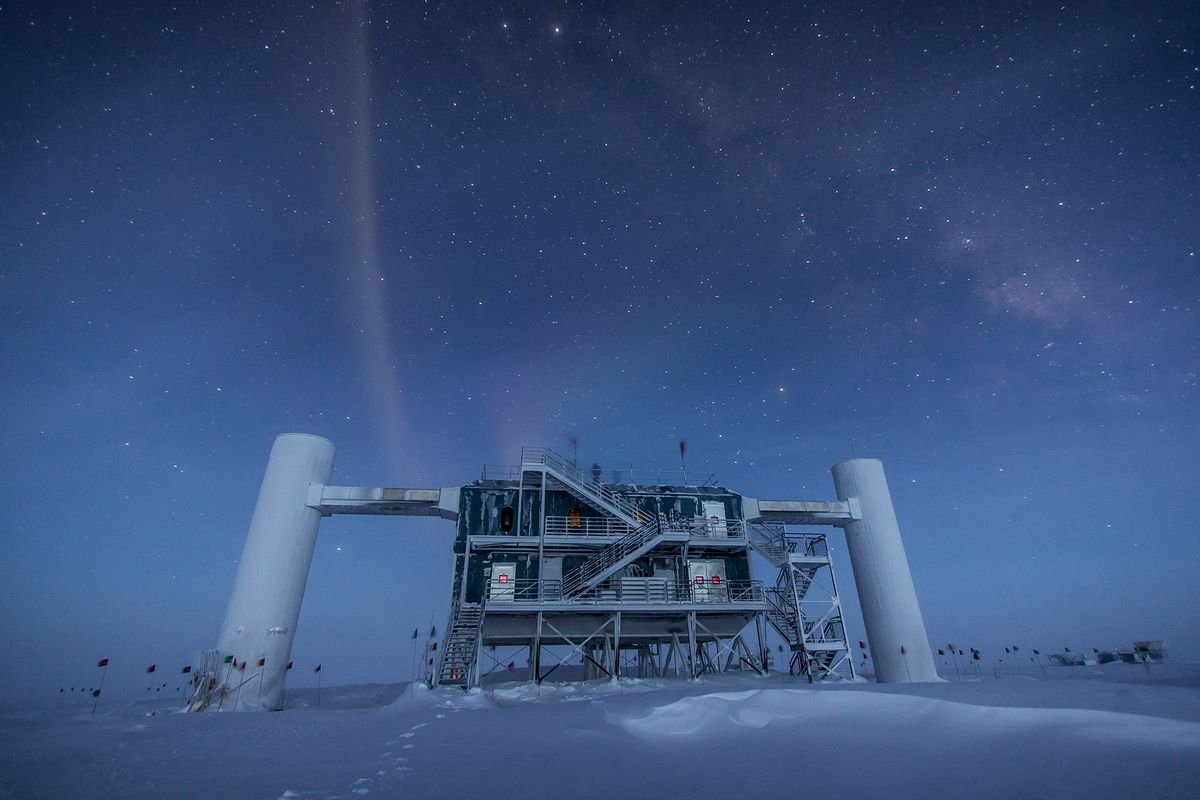
Neutrinos are perhaps the most underrated particles known to humankind. Physicist, smart guy and smart aleck Wolfgang Pauli first proposed their existence in 1930 as a missing puzzle piece — certain nuclear reactions had more going in than they had coming out. Pauli reasoned that something tiny and invisible had to be involved — hence, the neutrino, which is kind of Italian for "little neutral one."
In the decades since that initial proposal, we've come to know and love — but not fully understand — those little neutral fellas. They have a little bit of mass, but we're not sure how much. And they can morph from one kind of neutrino (called a "flavor," because why not?) to another, but we're not sure how.
Whenever physicists don't understand something, they get really excited, because, by definition, the answer to the riddle must lie outside known physics. So the mystery of neutrino mass and mixing may give us clues to such mysteries as the earliest moments of the Big Bang.
One small problem: smallness. Neutrinos are tiny and hardly ever talk to normal matter. Trillions upon trillions are passing through your body right now. Do you notice them? No, you don't. To really dig into neutrino properties, we have to go big, and three new neutrino experiments are coming online soon to give us a handle on things. We hope. [Six Cool Underground Science Labs]
Let's explore:
DUNE
You may have heard the excitement about a remake of the classic sci-fi novel "Dune." This isn't it. Instead, this DUNE stands for the "Deep Underground Neutrino Experiment," which consists of two parts. Part one will be at Fermilab, in Illinois, and will include a giant evil-genius-style neutrino gun that will accelerate protons to near the speed of light, smash them into things and shoot trillions of neutrinos per second out of the business end.
From there, the neutrinos will travel in a straight line (because that's all they know how to do) until they hit part two, about 800 miles (1,300 kilometers) away at the Sanford Underground Research Facility in South Dakota. Why underground? Because neutrinos travel in a straight line (again, no choice) but Earth is curved, so the detector has to sit about a mile (1.6 km) under the surface. And that detector is about 40,000 tons (36,000 metric tons) of liquid argon.
Hyper-Kamiokande
The predecessor to the soon-to-be Hyper-Kamiokande ("Hyper-K" if you want to be cool at physics parties) was the aptly named Super-Kamiokande ("Super-K" for the same reasons), located near Hida, Japan. It's a pretty straightforward setup for both instruments: a giant tank of ultrapure water surrounded by photomultiplier tubes, which amplify very faint light signals.
Every once in an extremely rare while, a neutrino hits a water molecule, causing an electron or a positron (the antimatter partner of the electron) to scoot away faster than the speed of light in water. This causes a flash of bluish light called Cherenkov radiation, and that light is picked up by the photomultiplier tubes. Study the flash, understand the neutrino.
Super-K made super-history in 1998 when it provided the first solid evidence that neutrinos change flavor as they fly, based on observations of the neutrinos produced in the infernal depths of the sun's core. The discovery nabbed physicist Takaaki Kajita a Nobel Prize and Super-K an affectionate pat on the photomultiplier tube.
Hyper-K is like Super-K but bigger. With a capacity of 264 million gallons (1 billion liters) of water, it has 20 times the collecting volume of Super-K, which means it can potentially collect 20 times the number of neutrinos in the same time Super-K can. Hyper-K will look for neutrinos produced by natural, organic reactions, like the fusion and supernovas, across the universe, starting in about 2025. Who knows? It might get someone a Nobel Prize, too.
PINGU
I'm not exactly sure why physicists choose the acronyms they do for giant science experiments. In this case, Pingu is the name of a European animated penguin who has various misadventures and learns important life lessons on the southern continent. It also stands for "Precision IceCube Next Generation Upgrade" (PINGU).
The IceCube part of that acronym refers to the biggest, baddest neutrino experiment in the world. Based at the South Pole, the experiment consists of strings of detectors sunk deep into the polar ice sheet that will use the crystal clarity of that ice to do the same thing that Super- and Hyper-K do up in Japan: detect the Cherenkov radiation produced by neutrinos zinging through the ice. The experiment only really got going a few years ago, but already the scientists who run it are itching for an upgrade.
Here's why. IceCube may be big, but that doesn't mean it's the best at all things. It has a blind spot: Because of its enormous size (an entire cubic kilometer of ice), it has a hard time seeing low-energy neutrinos; they simply don't make enough pop and fizzle to be seen by IceCube's detectors.
Enter PINGU: a bunch of extra detectors, arrayed near the center of IceCube, specifically designed to catch the lower-energy neutrinos that strike Earth.
When it (hopefully) comes online, PINGU will join the army of instruments and detectors all around the world that are trying to catch as many of these ghostly little almost-nothings as possible and unlock their secrets.
Originally published on Live Science.
2019-08-19 11:00:00Z
https://www.livescience.com/neutrino-experiments-dune-hyperk-pingu.html
Read Next >>>>
Bagikan Berita Ini
















0 Response to "'Evil-Genius' Neutrino Gun Could Finally Unmask the Tiniest Particles in the Universe - Livescience.com"
Post a Comment